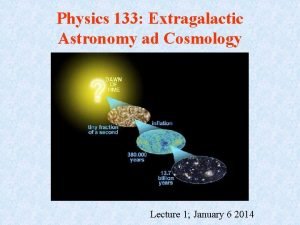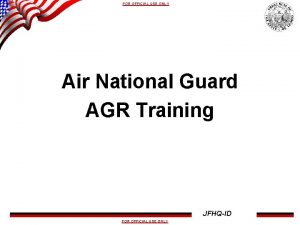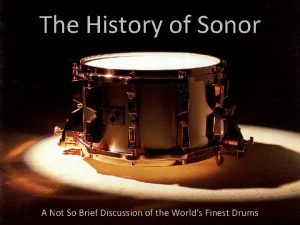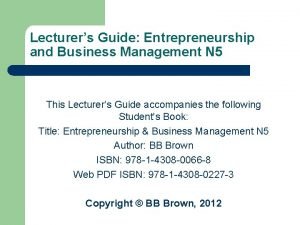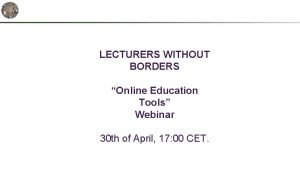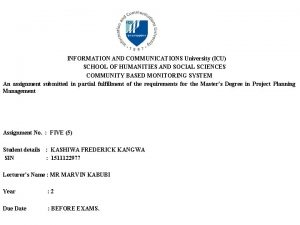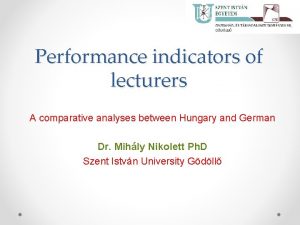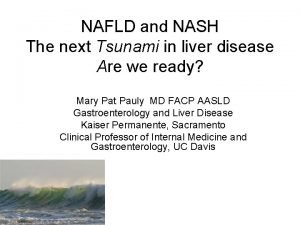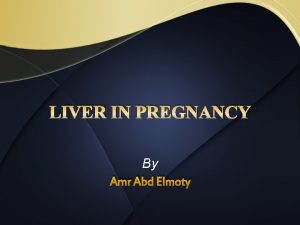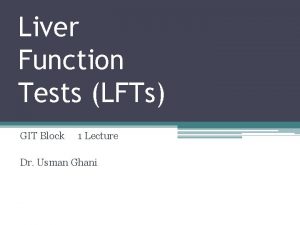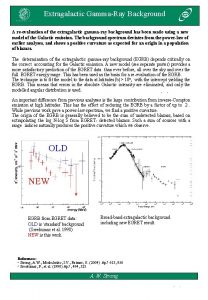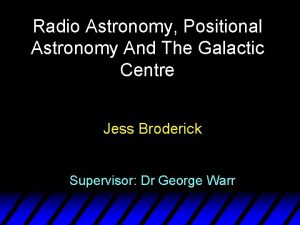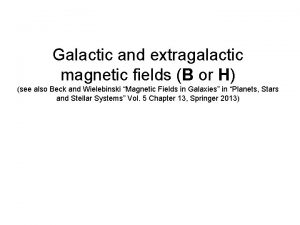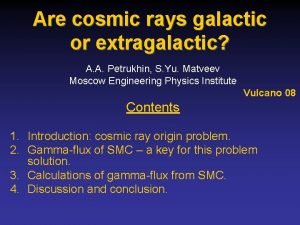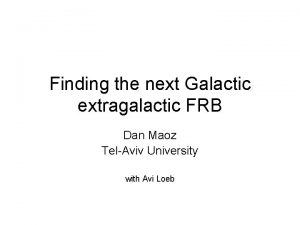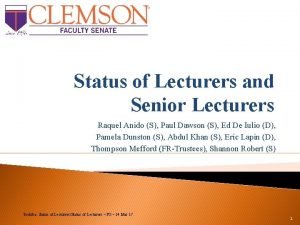AST 3003 S Galactic and Extragalactic Astronomy Lecturers












- Slides: 12

AST 3003 S Galactic and Extragalactic Astronomy • Lecturers (shared course) – Renée C. Kraan-Korteweg (first part: 15/07 – 23/08) • Astronomy Department (RW James Bldg, room 539. 2) • Tel: 021 - 650 5829 (leave voice mail) • Email: kraan@ast. uct. ac. za – Kurt van der Heyden (second half: 26/08 – 15/10) • Astronomy Department (RW James Bldg, room 537) • Tel: 021 – 650 4042 • Email: heyden@ast. uct. ac. za • Tutor : – Ed Elson – Astronomy Department (RW James Bldg, room 526/525) • Email: ed@ast. uct. ac. za • Secretary: – Roslyn (Roz) Daniels • Astronomy Department (RW James Bldg, room 536) • Tel: 021 - 650 4437 • Email: admin@ast. uct. ac. za

Galactic & Extragalactic Astronomy Lecture slot: Monday – Friday, 2 nd period (09: 00 – 09: 50) preferentially to be moved 11: 00 – 11: 50 – clash? Tutorial slot: Wednesday afternoon, 6 th and 7 th period (14: 00 – 16: 00) Clash for anyone? Else Tuesday, or Friday? Actual dates of tuts will be announced in class NOTE: extra tutorials on IRAF the 2 week(s) before observing (Dr. Natasha Maddox, PDRF) Question time: Availability of Ed Elson: Thursdays 2 -3 pm (can be changed) Venue: Lectures: - Room 2. 19 (ACGC) RW James Tutoring sessions: - Room 2. 19 (ACGC) RW James

Galactic & Extragalactic Astronomy Tutorials: - Exercises/problem solving (about once every 2 nd week) - Projects: observations, data reductions, analysis and report in - (a) Radio astronomy (KAT office, radio project) - (b) Optical astronomy/spectroscopy (1. 9 m telescope, Sutherland) - (c) Presentation on hot topic (oral) Diarise following timeslots!!! (a) (b) 31 July: Wednesday tut-slot for KAT office visit and radio astronomy prac (date not confirmed yet) 1 - 8 Sept: Note: (c) 2 Oct: Sutherland for spectroscopic observations with 1. 9 m Radcliffe telescope - we will go in groups of 4 -5 students for 3 nights each, during which each group will be in charge of observations for 2 nights - this is in the semester break, and obligatory !!! Wednesday tut-slot for presentation on hot topic & and copy of presentation!!!

Galactic & Extragalactic Astronomy Grading: Tutorials/pracs: → All together 30% - Homeworks (8%) - KAT visit/prac/report (2%) - Sutherland observing project (12%) - Presentation on hot topic (8%) active participation bonus late hand in of homework or reports get 10% deduction Class tests: → Count for 20% 2 class tests (10% each; 23 Aug; 14 or 15 Oct) unexcused absence of exam: 0 for the exam End of year examination (2 hr exam): → Counts for 50% (22 Oct - 7 November 2013)

Main Books (all available at amazon. com): – “An Introduction to Modern Astrophysics”, B. W. Carroll & D. A. Ostlie, Addison Wesley, 1 st edition, 1995, ISBN 0 -201 -54730 -9 (used from USD 30 upwards, new USD 150) 2 nd edition, 2006 (21 July) – “Fundamental Astronomy”, H. Karttunen, P. Kroeger, H. Oja, M. Poutanen, K. J. Donner, Springer, 3 rd revised and enlarged edition, 1997, ISBN 3 -540 -60936 4 th revised revision, 2003 – Other good books – of interest for certain sections: • “Galaxies in the Universe: An Introduction”, L. Sparke, J. Gallagher, Cambridge Univ. Press, 2000 [SG] ISBN 3 -540 -41927 -6; 2007 2 nd edition • “Galactic Astronomy”, J. Binney, M. Merrifield, Princeton Univ. Press, 1998 [BM] ISBN 3 -540 -41927 -6 (graduate level; some chapters really excellent) • “Galaxies and Galactic Structure”, D. Elmegreen, Prentice Hall, 1997, ISBN 3 -540 -41927 -6, (undergraduate level; very good and clear) • “The Physical Universe: An Introduction to Astronomy”, F. Shu, 1982, University Science Books, ISBN 0 -19 -855 -706 (does not cover more modern discoveries, but very didactical in the material it covers that is still up to date) Note!!! Lecture notes are guidelines - Go to original material to study

CONTENT (first part RKK; few lectures by Ed Elson) 1995 The Milky Way 1. Overview MW [BM 1; CO 1. 3, 22. 1, 22. 2; KKOPD 2. 1, 2. 7] • Some history; review of size, shape, and components • Spherical trigonometry; Galactic coordinate system 2. Interstellar Medium [mostly KKOPD 4. 5, 16; CO 12. 1; BM 3. 7, …] • Observations and effect of ISM (opacity, extinction and reddening) • Interstellar dust: discovery, measurements, overall Galactic extinction (in MW and external galaxies); dark nebulae, reflection nebulae, dust temperature, composition and origin of dust • Gas: neutral hydrogen, HII regions, molecular hydrogen, PN, SNR, hot gas 3. Morphology and Components of the Galaxy [CO 22. 2, 22. 4, KKOPD 18. 1 -2] • Distance indicators (up to Cepheids), the Local Standard of Rest, Spectra of galaxies • Stellar statistics, populations and metallicity, thin & thick disk and M/L, spiral structure, satellite galaxies, the Galactic Bulge, the Galactic Halo 4. Kinematics [KKOPD 18. 2 -18. 3, CO 22. 2 -22. 4] • Differential rotation; Oort’s constants; • Rotation curve, total mass of Galaxy, Dark Matter • Galactic Centre and evidence for SMBH Galaxies 5. Morphology of Galaxies, statistical properties [mostly CO 23] • Review of morph. classification; spectra, comparison of global properties • Spiral galaxies: photometry, rotation curves, Tully-Fisher and other relations, SMBH • Elliptical galaxies: photometry; dust gas & metallicity, Faber-Jackson relation, 3 D-shape and rotation measure • Statistical properties: the luminosity function • Distribution in space: distance determinations

CONTENT (2 nd part with Dr Kurt van der Heyden) 6. Active Galaxies • • • Unified Model Radio Jets Using Quasars to probe the Universe 7. Scales of the Universe • Introduction to large-scale structures • Large Structures in the Universe • Groups and clusters of galaxies 8. Lives of Galaxies • • • Galaxy formation Galaxy evolution Dark Matter 9. Cosmology • • Newtonian Cosmology The Cosmic Microwave Background The Early Universe Origin of Structure

Assignment of 1 term paper (8%): Note: must be related to course • Selection of topic (final topic decision on 22 August) • Search (and approval by lecturer) of research material (books, journals, internet) • Preparation of ppt-presentation of 8 -10 minutes, followed 2 min discussion time • Hardcopy hand-out of ppt-slides to all participants on day of presentation • A 1 -page (2 max) summary report of hot topic (proper journal style) ==> Proper accreditation to sources used!!! • SUGGEST YOUR OWN TOPIC … Find articles related to content of course Sources as starting point and overview; • • Scientific American (http: //www. scientificamerican. com) Science (http: //www. sciencemag. org/magazine) (Sky and Telescope) Internet (such as – http: //www. sciencedaily. com) Often based on press releases (hot topics), but not always with journal articles yet available – http: /www. skyandtelescope. com/news – http: //news. discovery. com/space (App)

Suggestions for presentations (Sc. Am and S&T) : The Benevolence of Black Holes by C. Scharf, Scientific American 307, 22 -27 (August 2012) (How Black Holes Shape the Galaxies, Stars and Planets around them; BH may actually account for Earth's existence and habitability) The Inner Life of Star Clusters, by Steven W. Stahler, Scientific American 308, 44 - 51 (March 2013) The Far, Far Future of Stars by Donald Goldsmith Scientific American: March 2012, pgs 28 -33 (Future of Universe) Galaxies in a New Light by Michael Rich Sky & Telescope: April 2012 pgs 20 -25 (GALEX, SF) Where was the Sun Born? Finding the Sun’s Lost Nursery by Robert Zimmerman Sky & Telescope: Mar 2012 pgs 30 -36 The Dark Side of the Milky Way by Leo Blitz Scientific American: Oct 2011, pgs 22 -29 (DM, warp of MW, Missing satellite) The lost Galaxies by James E. Geach Scientific American: May 2011, pgs 30 -37 (WHIg. M; galaxy evolution, feedback) The Quest for the Most Massive Star by Yaël Nazé Sky & Telescope: May 2010 pgs 22 -27

Suggestions for presentations (Science daily etc) : A Vast Thin Plane of Co-rotating Dwarf Galaxies Orbiting the Andromeda Galaxy Rodrigo A. Ibata et al. , Nature 493, 62 -65 (2013) www. sciencedaily. com/releases/2013/01/130103113846. htm A Herschel [C II] Galactic plane survey I: the global distribution of ISM gas components (there is more molcular gas in the Milky Way than ever thought before) by J. L. Pineda, et al. , 2013, Astronomy & Astrophysics, 554, A 103 http: //sci. esa. int/herschel/51909 SEGUE 2: THE LEAST MASSIVE GALAXY (Scientists Size Up Universe's Most Lightweight Dwarf Galaxy) Evan N. Kirby et al. , The Astrophysical Journal, 2013; 770 http: //www. sciencedaily. com/releases/2013/06/130610133535. htm A dust-obscured massive maximum-starburst galaxy at a redshift of 6. 34 (Massive Galaxy Had Intense Burst of Star Formation When Universe Was Only 6 Percent of Current Age) Dominik A. Riechers, et al. Nature, 2013; 496 (7445) http: //www. sciencedaily. com/releases/2013/04/130417131819. htm Signatures of Cool Gas Fueling a Star-Forming Galaxy at Redshift 2. 3, by N. Bouche, et al. 2013; Science 341 (6141) http: //www. sciencedaily. com/releases/2013/07/130705102029. htm Transformation of a Virgo Cluster Dwarf Irregular Galaxy by Ram Pressure Stripping: IC 3418 and its Fireball (PR: Requiem for a Weeping, Doomed Galaxy) Jachym, P. A&A, in press (ar. Xiv: 1305. 7113) http: //news. discovery. com/space/galaxies/requiem-for-a-weeping-galaxy-130620. htm

Suggestions for presentations (Science daily) : Comprehensive Study of a z = 2: 35 DLA Galaxy: Mass, Metallicity, Age, Morphology and SFR from HST and VLT Krogager et al, 2013, MNRAS, in press (Ar. Xiv: 1304. 4231) http: //news. discovery. com/space/galaxies/our-chemical-origins-in-a-distant-galaxy 130703. htm Accelerated chemistry in the reaction between the hydroxyl radical and methanol at interstellar temperatures facilitated by tunnelling, Robin J. Shannon, et al, Nature Chemistry, 2013 http: //news. discovery. com/space/cosmic-booze-created-in-quantum-brewery-130701. htm Seeds of Massive Black Holes Found at the Centre of the Galaxy http: //www. sciencedaily. com/releases/2012/07/120720083011. htm Oka, Y. O. et al: ASTE COJ= 3 -2 SURVEY OF THE GALACTIC CENTER; Ap. JSS 2012 Astronomers Using the HST Report the Earliest Spiral Galaxy Ever Seen http: //www. sciencedaily. com/releases/2012/07/120718131746. htm Law, D. R. et al. 2012, Nature Hubble Unmasks Ghost Galaxies (Missing Satellite problem) http: //www. sciencedaily. com/releases/2012/07/120710133102. htm Brown T. M. et al. 2012; The Primeval Populations of the Ultra-Faint Dwarf Galaxies; Ap. J Multiple Mergers Generate Ultraluminous Infrared Galaxy http: //www. sciencedaily. com/releases/2012/06/120629120318. htm Taniguchi, Y. et al 2012: Post-Starburst Tidal Tails in the Archetypical Ultra Luminous Infrared Galaxy Arp 220, MNRAS 753

Journal Articles (most important astronomical websites) – The ADS server (http: //adsabs. harvard. edu/abstract_service. html) mirror site at http: //saaoads. chpc. ac. za/abstract_service. html with links to full journal articles – Astro-ph: Mostly all astronomical articles on astro-ph (http: //arxiv. org/archive/astro-ph) since about early 90’s; often not yet in print but mostly accepted for publications) • Daily new articles on http: //arxiv. org/list/astro-ph/new Checked by all active astronomers on a daily basis Some other important astronomical websites: • Nature http: //www. nature. com/news/index. html (particularly Thursdays) • The Annual Review of Astronomy and Astrophysics (http: //arjournals. annualreviews. org/loi/astro) – publishes invited reviews by leading experts in their field from all over the world.
 Extragalactic astronomy
Extragalactic astronomy Leaveweb afi
Leaveweb afi Sonor factory fire
Sonor factory fire Learning astronomy by doing astronomy activity 1 answers
Learning astronomy by doing astronomy activity 1 answers Learning astronomy by doing astronomy activity 7 answers
Learning astronomy by doing astronomy activity 7 answers Learning astronomy by doing astronomy activity 1 answers
Learning astronomy by doing astronomy activity 1 answers Ebm n5 module 1
Ebm n5 module 1 Lecturers without borders
Lecturers without borders List of lecturers at icu zambia
List of lecturers at icu zambia Raquel anido
Raquel anido Ast levels and exercise
Ast levels and exercise Budd-chiari syndrome triad
Budd-chiari syndrome triad Liver function test normal range chart
Liver function test normal range chart
